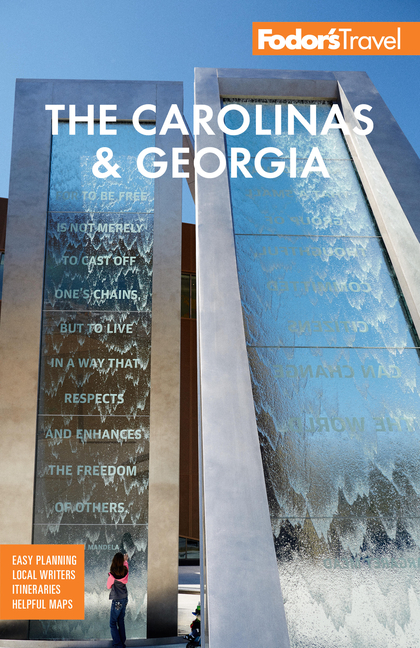Georgia's Coastal Isles Beaches
Remote and largely untouched, the beaches on Georgia's barrier islands sit at the confluence of rich salt marshes and the Atlantic Ocean. Nature-watching on foot or by canoe or kayak is the biggest draw, with dolphins, manatees, nesting sea turtles, more than 300 bird species, and much more found along these shores.
Of all the islands, only two—Jekyll and St. Simons—have undergone significant development. East Beach on St. Simons has the most facilities and is the place to go for sunbathing, swimming, and water sports, while Jekyll's beaches are both accessible and uncrowded. Driftwood Beach, at Jekyll's northern end, is arguably the most picturesque beach on the coast, and dolphins frolic off St. Andrews Beach, at the island's southern tip. Exploring the farther-flung beaches of Sapelo or Cumberland Islands requires advance planning and a ferry ride, as both are protected parklands and access is limited. Beachcombing is especially good here.
Beach Camping
Experience the best of Georgia's beaches by pitching a tent shoreside. Cumberland Island has wonderful camping, with standard campgrounds as well as backcountry campsites that can be reached only by hiking trails taking you 5½ to 10½ miles from the ferry dock. There are no stores on the island, so bring all necessary food and supplies. Camping costs $22 per night; reservations are required.
Georgia's Coastal Isles Best Beaches
Nanny Goat Beach (Sapelo Island)
Used as an outdoor classroom by the Sapelo Island National Estuarine Research Reserve, this remote beach, accessible only by boat, offers ample beachcombing and wildlife-watching opportunities. Look for conch shells on its 2 miles of sandy shore while pelicans and osprey fish among the shallows, or bring a seine (a large, weighted net) to dip for shrimp and crabs. Dunes give way to protected maritime forest, and a ¾-mile trail leads to the historic Reynolds Mansion.
East Beach (St. Simons Island)
The Golden Isles' liveliest stretch of sand occupies the southeastern edge of St. Simons Island, from the Coast Guard station at the end of 1st Street to Massengale Park, both of which offer facilities and access to the hard-packed-sand beach. Here you can swim and sun, boogie board in the mild shore break, or kitesurf past the offshore sandbars. This is one of the few beaches in the area with lifeguards, making it a good family destination.
Driftwood Beach (Jekyll Island)
The northern end of Jekyll Island offers beautiful views of St. Simons against a stark and dramatic backdrop. Accessible by trail from the Clam Creek Picnic Area or from North Beachview Drive, near the campground the beach has a graveyard of coastal trees slowly succumbing to the sea, reeling at odd angles as the encroaching tide loosens their roots. Drained of color by the sun and saltwater, they create a maze of craggy limbs. Come here for the view and the unique scenery, but use caution swimming among the branches.
Dungeness Beach (Cumberland Island)
Nearly 18 miles of unspoiled beach fringe the eastern edge of this national-park island, off the coast of St. Marys. At the southern end, Dungeness Beach is accessible via the Cumberland Queen II, a reservations-only, 146-passenger ferry that stops here and at Sea Camp Beach to the north. Beachcombers can find shells and shark teeth here, and Pelican Flats, off the island's southern tip, offers good shore fishing. From the beach it's an easy hike to the ruins of Thomas Carnegie's great estate, Dungeness. Keep an eye out for the wild horses that roam the area.




